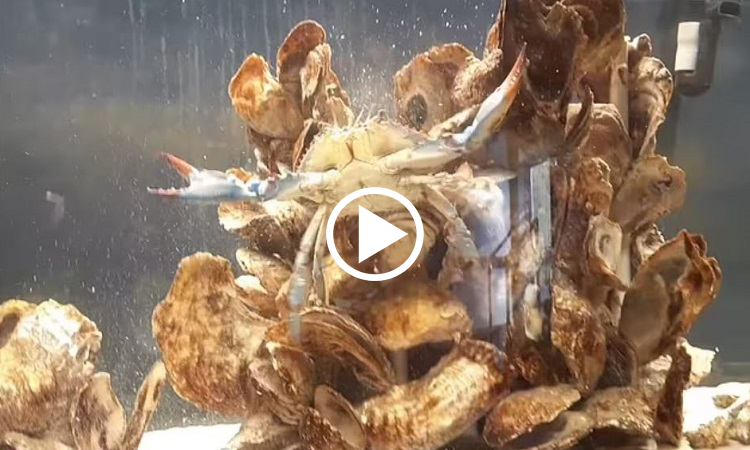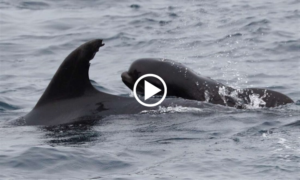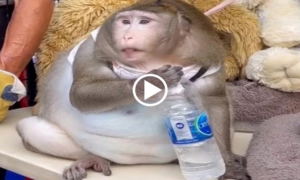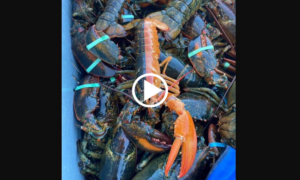The Atlantic blue crab with a body divided by both sexes has become a “star” at a science museum in Maryland.
The crab has an extremely rare syndrome called hermaphroditis, 11.4 cm long and around 3 years old. It has blue claws with red tips and irregular bibs. According to the Virginia Institute of Marine Science (VIMS), male blue crabs typically have a blue tip and sharp T-shaped bibs, while female crabs have a red tip and large, dome-shaped bibs.
Hermaphrodites have not been reported on the east coast of the United States for at least 15 years. Fisherman Jerry Smith caught a half-male, half-female crab in Maryland Bay. Instead of throwing it away, Smith donated it to the Delmarva Discovery Museum. Currently, the crab lives in a 264 liter tank.
“Our crabs don’t exhibit such distinctly male and female characteristics, but we are paying more and more attention to them as they adapt to their new habitat and receive nutritious food,” Agriculture expert September Meagher at the Delmarva Discovery Museum.
Hermaphrodite syndrome usually appears very early in the body’s development, when the individual has 8 to 64 cells. The syndrome is a cellular abnormality that occurs when the crab is still in egg form, according to Meagher. At one point, cells do not divide their sex chromosomes in the usual way, resulting in an uneven distribution of sex characteristics, from color to reproductive organs. Hermaphrodite syndrome differs from bisexuality, in which only the genitals are affected.
Hermaphrodite syndrome does not occur in mammals, but has been reported in lobsters, crabs, snakes, butterflies, bees, chickens, and birds. People with the syndrome may be affected by water temperature or hormone levels in the mother’s womb.
Marine biologists at VIMS are looking at the rare genetic syndrome to better understand blue crab reproduction and sexual development, Meagher explains. This species was once a major economic source in the region, but its numbers have declined due to overfishing and pollution. Currently, the museum has not named the crab but is seeking the opinions of visitors.
Bottlenose dolphin with pilot whales







